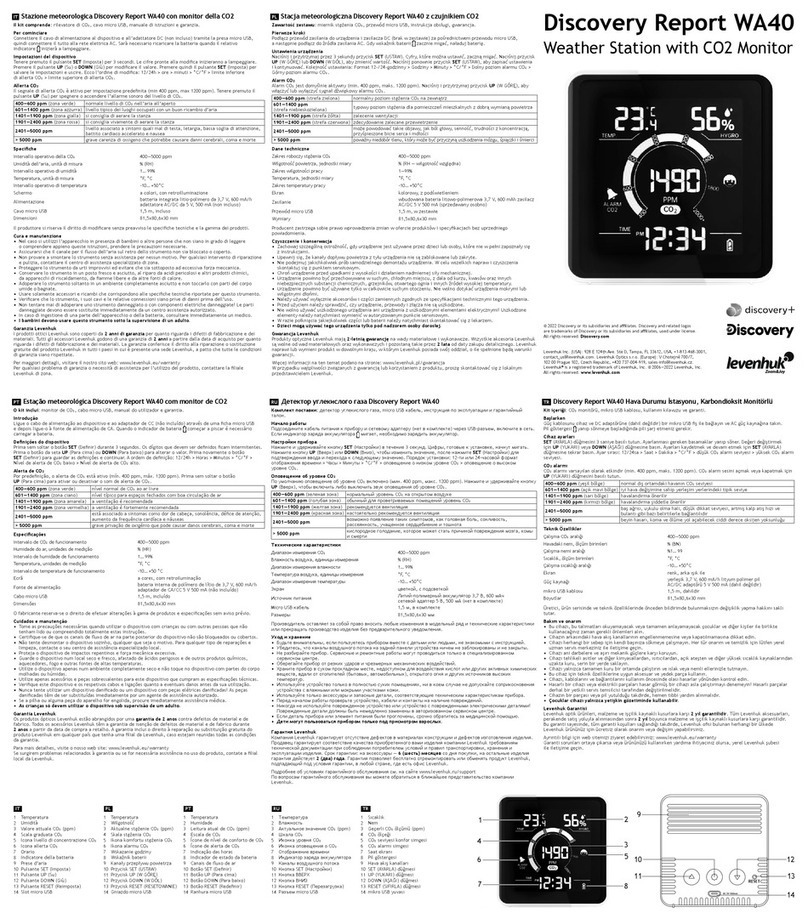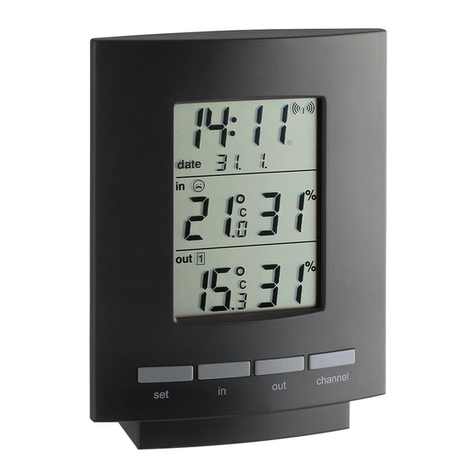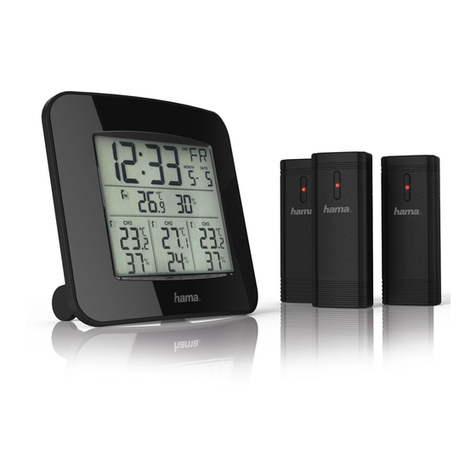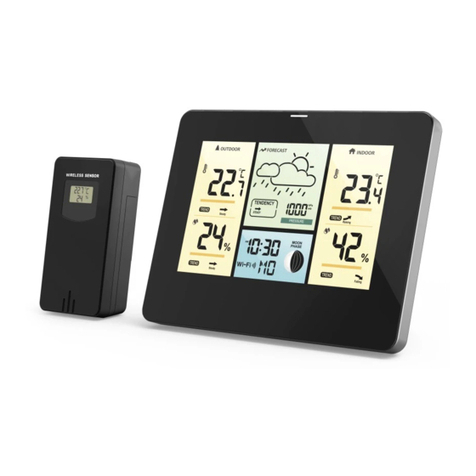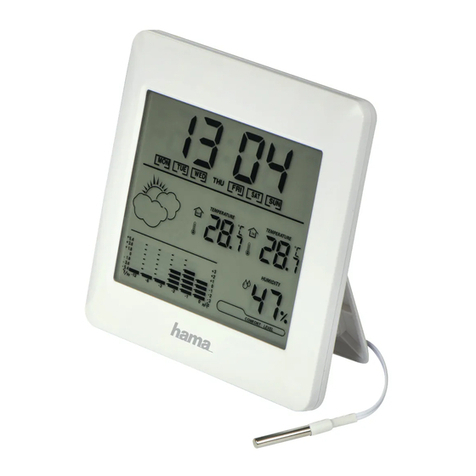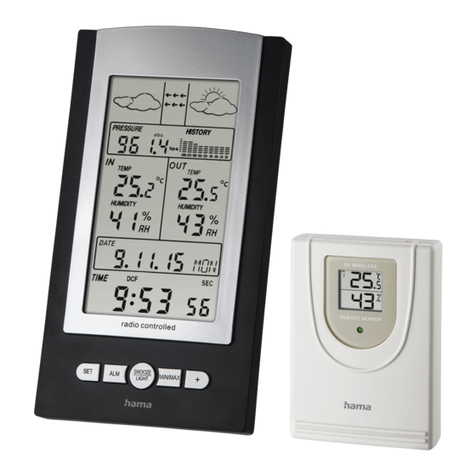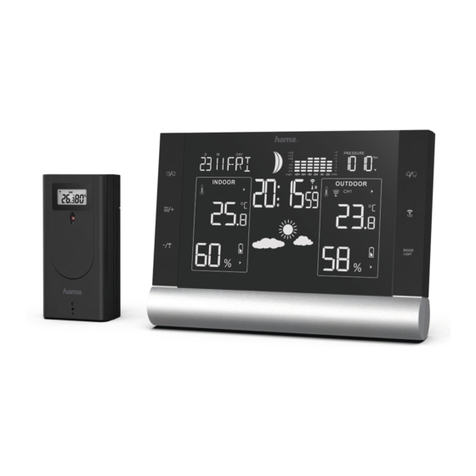9
Alarm
•Repeatedly press the MODE button (35) to access alarm mode 1 or 2.
•A1 or A2 is displayed accordingly in the seconds display.
•Press and hold the MODE button (35) for approx. 3 seconds to set the signal time of the alarm displayed.
The hours display begins to ash.
•Press the +button (36) or the –button (37) to select the hour for the alarm time and conrm your selection
by pressing the MODE button (35). The minutes display begins to ash.
•Repeat the process to set the minutes for the alarm time.
•Press the MODE button (35) repeatedly to also set the other alarm mode or return to the time display (12).
•If you do not make an entry for 20 seconds, you automatically exit setup mode.
Note – Alarm
•When activated, alarm mode 1 only triggers an alarm signal on weekdays (Monday to Friday).
•When activated, alarm mode 2 only triggers an alarm signal on Saturday and Sunday.
•In alarm mode 1 or 2, press the – button (37) to activate/deactivate the corresponding alarm and conrm
your entry by pressing the MODE button (35).
The alarm symbol (27) will appear/not appear.
•If the alarm is triggered, the alarm symbol (27) will begin to ash and an alarm signal will sound.
•Press any button (except the SNOOZE/LIGHT button (34) to stop the alarm. Otherwise, it will stop
automatically after 2 minutes.
•If you press the SNOOZE/LIGHT button (34) during the alarm, the alarm is interrupted for 5 minutes and
then goes off again. The alarm symbol (27) will ash.
Height/weather forecast/atmospheric pressure unit
•Press and hold the HISTORY button (39) for approx. 3 seconds to make the following settings one after
the other:
height of the location, symbol for the current weather conditions, atmospheric pressure unit (hPa/ inhg)
•To select the individual values, press the +button (36) or the –button (37) and conrm each selection by
pressing the HISTORY button (38).
Note
•The height at the current location and the current weather form the basis for calculating the atmospheric
pressure and the weather forecast.
•If you should not know the values for these variables, you can nd further information in the Internet,
from the local meteorological oce, on the radio, etc.
•Werecommend that you adapt these values to your location to increase the accuracy of the weather
forecast.
•Aheight of 590 m and slightly cloudy weather are used as standard.

